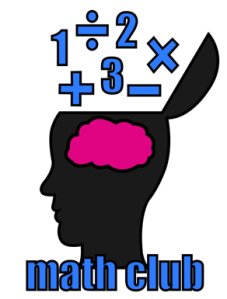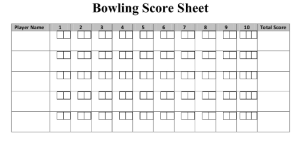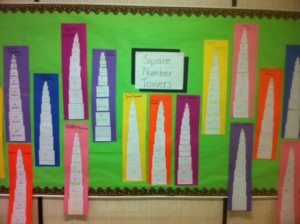 You may have heard of math clubs in high schools, but math clubs are a wonderful idea for elementary or middle school students as well. For a number of years I ran a successful weekly math club at the inner city elementary school where I was then teaching. The club was mainly targeted at students in grades 4 to 7 (my school was a K-7 school) although if a grade 3 student were interested in coming, I never turned the child away.
You may have heard of math clubs in high schools, but math clubs are a wonderful idea for elementary or middle school students as well. For a number of years I ran a successful weekly math club at the inner city elementary school where I was then teaching. The club was mainly targeted at students in grades 4 to 7 (my school was a K-7 school) although if a grade 3 student were interested in coming, I never turned the child away.
“Euclid Club”, named of course for the Alexandrian Greek mathematician/geometer, met for 30 minutes one day each week after school. It came about simply because I felt there were so many interesting math ideas that just did not fit into my classroom time (or curriculum!) and I wanted the opportunity to share those ideas with kids. Thus Euclid Club was born! I can get pretty excited about mathematics (as anyone who knows me can testify to!) and did not have too much difficulty getting kids to come give the club a try. Our numbers certainly varied over the months depending on what other after-school activities were happening or what other out-of-school activities students were involved in, but we consistently had a pretty good group out at our meetings. I always provided some kind of small snack as well! Certainly not enough to be the main draw, but it was always welcomed by the kids.
There are many benefits to engaging children in math club. For me, first and foremost was that it gave students a chance to build a different perspective about mathematics. Many of them thought of themselves as not being “good” in math and tended to disengage in math in the classroom. The atmosphere in Euclid Club was welcoming, engaging, and lively, and many not only became comfortable with exploring math ideas, but additionally they built a sense of belonging within the club.
So, what kinds of ideas and activities can be explored in that context? Here are some of the things we explored in Euclid Club:
• We learned and played math/thinking games such as Nim, chess, cribbage, etc.
• We examined other number bases, such as base 4, base 2, and base 12. We wrote the value of base 10 numbers in the different bases. We figured out the base 10 value of numbers written in other bases. We added and subtracted in other bases.
• We worked with pentomines, trying to fits sets of pieces into given frames: 6 x 10, 5 x 12, or 8 x 8 (with either the four corners “removed” or the four center squares “removed”).
• We created designs with tangrams.
• We made pattern placemats using cut-out pattern block pieces to make interesting borders on construction paper.
• We used pattern blocks to create designs with one or more lines of symmetry.
• We measured our bodies and compared ratios (e.g., height to arm span; circumference of thumb to circumference of wrist; circumference of wrist to circumference of neck; circumference of neck to circumference of waist, etc.)
• We solved logic puzzles (using ones commercially produced).
• We created tessellations: we found shapes that would tessellate as well as creating our own unusual shapes that would tessellate.
• We made paper quilt squares in a variety of patterns and calculated the fractional part of each colour we used.
• We examined the Fibonacci sequence and looked at real-life examples of where it appears in nature (such as on a pinecone, on flowers, leaves, pineapples, seeds in fruit, etc.
• We created Moebius strips, and marked and cut them to discover interesting properties about them.
• We assigned each letter of the alphabet an amount (a = 1 cent, b = 2 cents, c = 3 cents, etc.) and looked for words whose letters would total $1.00.
• We solved magic squares and then created our own.
• We examined Pascal’s Triangle and looked for patterns on it.
• We created designs with exactly one metre of string glued on to paper (easier to do the basic designing first with dry string, then dip the string in white glue to create the final project).
• We created our own codes using numbers and wrote secret messages to each other.
• We made designs on 100-grid paper using a specific amount of coloured squares (e.g., what designs can be made colouring exactly 50% of the grid? 60%? etc.)
• We created “Guess My Number” puzzles for each other to solve. Each puzzles was to have 3 to 5 clues, first starting with a broad clue and getting more specific each time. (E.g., 1 My number is a prime number less than 30. 2 My number is not part of a pair of twin primes. 3 My number is even.)
I am sure there are other things we did, but those are the ones that I remember at the moment! I am sure you can find other ideas and topics to explore as well.
I hope you will consider giving Math Club a try (but give it a cool name! Kids love that!)
Mathematically yours,
Carollee
 Doing wanted posters for numbers is a great way to have kids think about specific properties of particular numbers. The posters make a great display, too — and I am always looking for ideas for math bulletin boards!
Doing wanted posters for numbers is a great way to have kids think about specific properties of particular numbers. The posters make a great display, too — and I am always looking for ideas for math bulletin boards!









